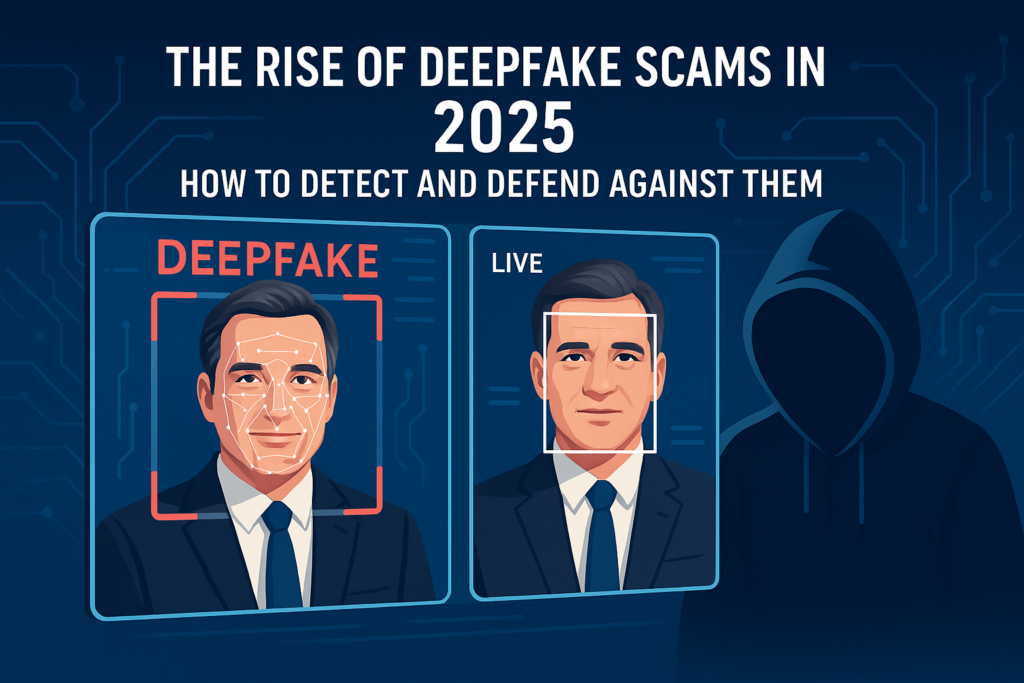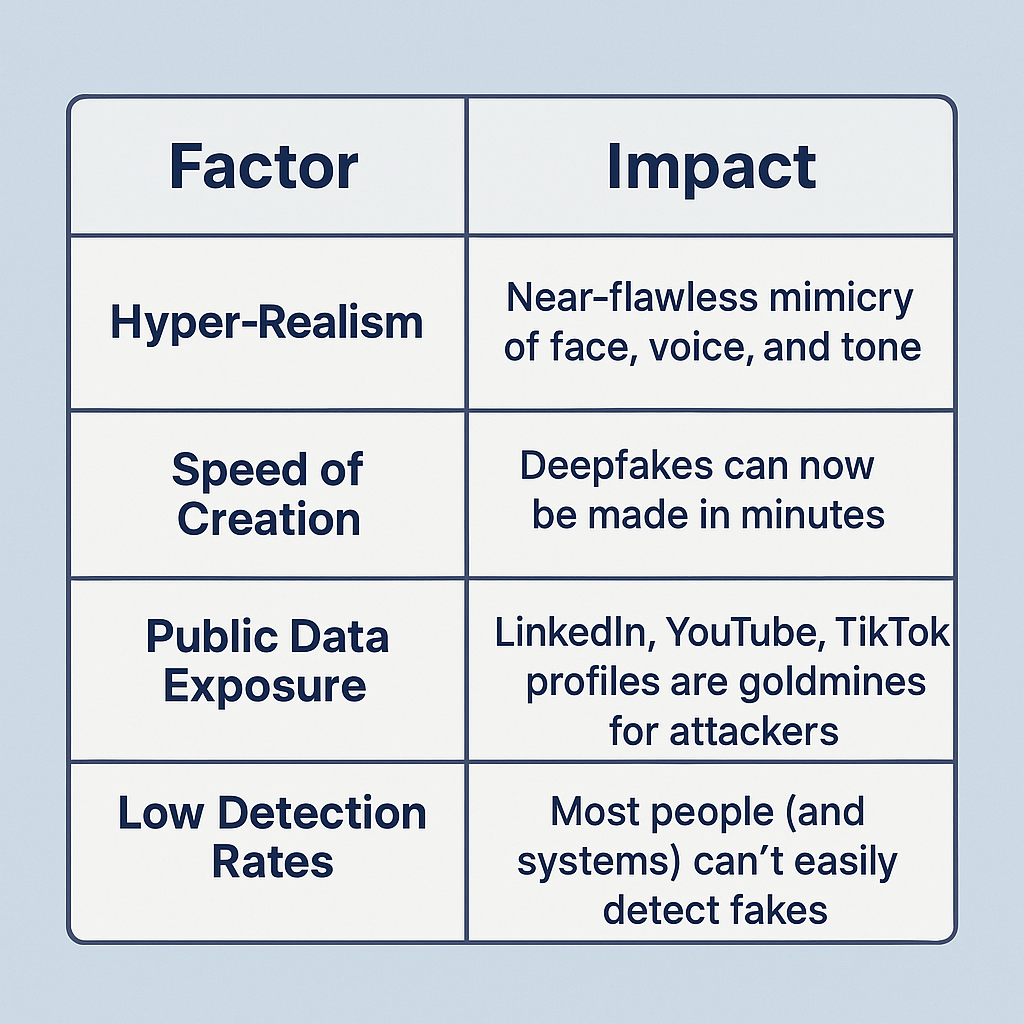
A Jacksonville teenager, Brooke Curry, became a victim of a pornographic deep fake when an altered nude image of her was shared online without her consent. Like Brooke, many people are becoming victims of deepfakes. You or I can be next!!!!
Why it is very easy to make Deepfakes ?
Well you don’t need to be some kind of technical expert to make deepfakes. Off-the-shelf tools like ElevenLabs, DeepFaceLab, and HeyGen can do the dirty work.
In fact, cybercriminals are continually developing and selling increasingly sophisticated deepfake tools on the dark web — a trend that’s alarming both in scale and danger. As a result, it’s becoming harder than ever to distinguish real from fake.
“Why Are Deepfake Scams So Effective?”

(Figure: Key factors driving the rise of deepfake scams)
🛡️ How to Detect Deepfakes
- First thing you would notice in Deepfake videos are they often lacking natural blinking and sometimes inconsistent lip sync.
- Use Deepfake Detection Tools
- Use Deepware scanner (https://scanner.deepware.ai).
- Microsoft Video Authenticator Tool.
- Reality Defender AI (https://www.realitydefender.com) – Works on real time zoom calls.
- Analyze Metadata– You can check for inconsistencies in meta data or sign of tampering.
- Ask Questions AI Can’t Answer– If you suspect a video or call is fake, steer the conversation toward something only the real person would know.
How to Protect Yourself and Your Business
For Individuals:
- 🎥 First, limit your public video content — the less available, the harder it is for attackers to replicate you.
- 🔒Avoid oversharing personal information on social media, especially anything that reveals your voice or appearance. If possible make your profile private.
- 🖋️ Consider using watermarked video tools when posting online. This makes it more difficult for your content to be misused.
For Businesses:
- ✅Implement multi-factor authentication for all financial instructions
- 🗣️ Create a “safe word” system for verifying voice or video instructions
- 🧠 Finally, train employees to recognize and report suspicious behavior or messages
“Your eyes can no longer be trusted. In 2025, your cybersecurity starts with skepticism.” – ByteTheHack.com
